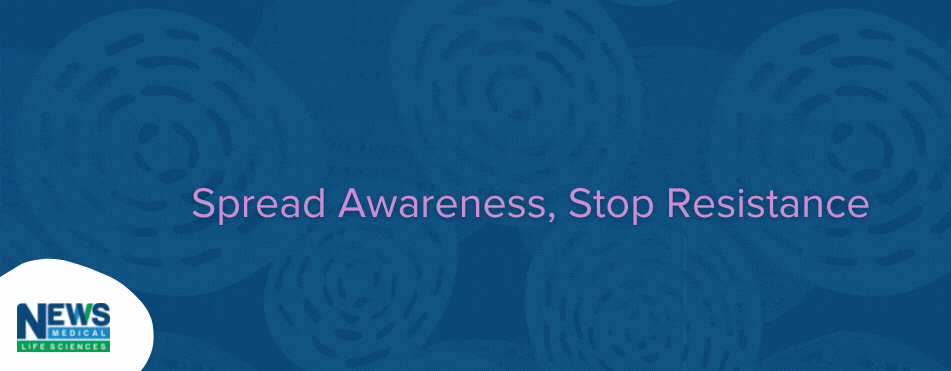
Topical antifungals are generally and extensively used in the management of superficial fungal infections in both adults and children. However, systemic antifungals began to be used with the development of amphotericin B-deoxycholate by Squibb Laboratories in 1958.
Systemic antifungals belong to three different classes:
- Polyene macrolides
- Azoles
- Allylamines
Miscellaneous molecules with antifungal activity include griseofulvin and flucytosine.
Polyenes
Amphotericin B was the first success from a long series of tests done on various polyene macrolides produced by Streptomyces - an actinomycete species living in soil. Amphotericin B remains one of the most clinically relevant systemic antifungals to this day, despite its toxicity and adverse effects on infusion, because of its efficacy against fungal organisms colonizing body cavities and hollow organs.
It acts in a peculiar way, by binding to ergosterol which is the main sterol compound in fungal cell membranes. This prevents normal membrane function and causes cellular contents to leak outside. It is toxic to the kidneys in humans and other mammals. This is the reason why the search for less toxic alternatives continued during the next four decades, until the next candidate came along, namely, fluconazole.
Azoles
Most antifungals in use today come from the azole and triazole group. These inhibit the biosynthesis of ergosterol by preventing 14 alpha-demethylation of lanosterol and (sometimes) the D22 desaturase action in the next step. The lack of ergosterol production causes the fungal membrane to become abnormally leaky and fluid, causing enzymes attached to it to stop functioning, and preventing cell wall synthesis.
Fluconazole is an imidazole but is free from the disadvantage of other molecules in this class, that is, poor oral absorption with a dose-related distribution in the body tissues (including the brain ventricles and ocular chambers). Its toxicity was also significantly lower than other azoles, which is important because systemic fungal infection usually occurs in seriously ill patients.
Though widely used, it became apparent that it could not act effectively against opportunistic fungal genera such as Fusarium and Aspergillus, whereas resistant Candida strains were selected out by its use. The introduction of triazoles has increased the specificity of this group of drugs by improving their binding to fungal cytochrome P450 rather than the human enzyme.
Allylamines
These include terbinafine which inhibits the synthesis of ergosterol and hence the fungal cell membrane. Terbinafine shows excellent in vitro activity against various dermatophyte species (such as Trichophyton and Epidermophyton); however, less activity is observed against filamentous fungi. Its main advantages are a solid safety profile and only a few identified drug interactions.
Flucytosine
Flucytosine (5-fluorocytosine) is an antimetabolite which works as an antifungal agent following its metabolism to 5-fluorouracil. This is then taken up into RNA during translation and disrupts protein synthesis. It also inhibits DNA synthesis by preventing the action of the enzyme thymidylate synthase. It is useful primarily against disease-causing yeasts.
Griseofulvin
Griseofulvin is among the earliest antifungals, but its mechanism of action is unknown as of yet. It is suspected that it interferes with microtubule assembly. This drug is often used concurrently with prescribed topical therapy.
2013-04-20 13.22 Registrars Systemic antifungals
Adverse Effects and Drug Interactions
The drugs belonging to various classes interact negatively with each other in different ways:
- By enhancing the toxicity of the other drug: Amphotericin B and flucytosine can react with other medications to cause renal toxicity and bone marrow toxicity. Hypokalemia is a common side effect with the use of amphotericin B, and this can cause various cardiac arrhythmias. This effect is more dangerous when the drug is combined with others such as the anti-allergic drugs terfenadine or astemizole.
- By speeding up or slowing its metabolism: for instance, when rifampin is given with a systemic antifungal; rifampin induces hepatic cytochrome P450 enzymes and promotes the breakdown of the antifungal and reduces its efficacy. This occurs with numerous drugs including phenobarbitone and phenytoin. Conversely, the breakdown of drugs like histamine, cyclosporin and glibenclamide can be significantly reduced by systemic antifungals. Thirdly, H2 receptor antagonists and proton pump inhibitors, as well as other drugs to reduce gastric acidity, reduce the absorption of ketoconazole and itraconazole.
Griseofulvin also enhances the actions of drugs such as the coumarin group of anticoagulants and estrogens. Many of these interactions are difficult to predict due to variations in metabolism between individuals, and even in the same individual under different circumstances.
Newer Systemic Antifungals
Recent research has brought forth several new agents such as:
Caspofungin, which is active against the fungal cell wall in Candida and Aspergillus strains resistant to other agents. It is at least as effective as Amphotericin B against systemic candidiasis. It belongs to the family of echinocandins.
Others in this family include micafungin and anidulafungin. These can be used only in the intravenous form but are highly effective in Candida infections, though their use is associated with an improved adverse effect profile and few drug interactions. The echinocandins inhibit the synthesis of fungal beta-1,3-glucan and so prevent cell wall synthesis.
Voriconazole is a newer triazole and as such has a broad spectrum of activity. It can be taken both orally and intravenously. It is useful in treating invasive aspergillosis, as well as resistant Candida infections. It may be even better than Amphotericin B with respect to treatment efficacy and patient survival. It does cause a variety of severe side-effects such as liver damage, ocular symptoms, and dermatologic reactions. It is also associated with drug interactions.
Posaconazole is another new drug which is used orally but is active against zygomycete infections. Others include ravuconazole, which can be administered orally or intravenously, and has a broad spectrum of activity and a long half-life. The need for better drugs is undisputed in view of the serious morbidity and death rates following systemic fungal infection, especially since they often occur in already ill and immunosuppressed patients.
Further Reading
Last Updated: Nov 17, 2021